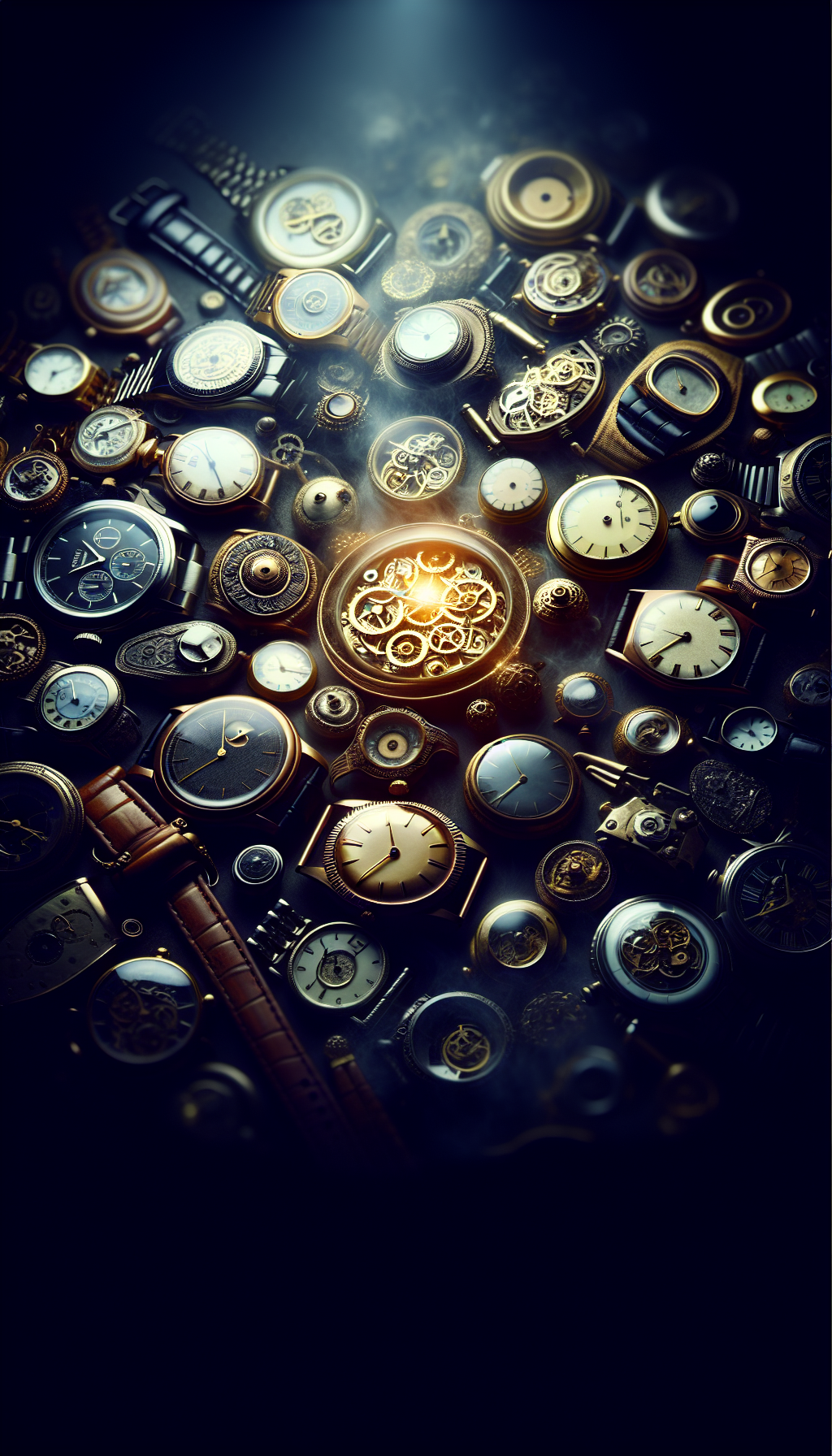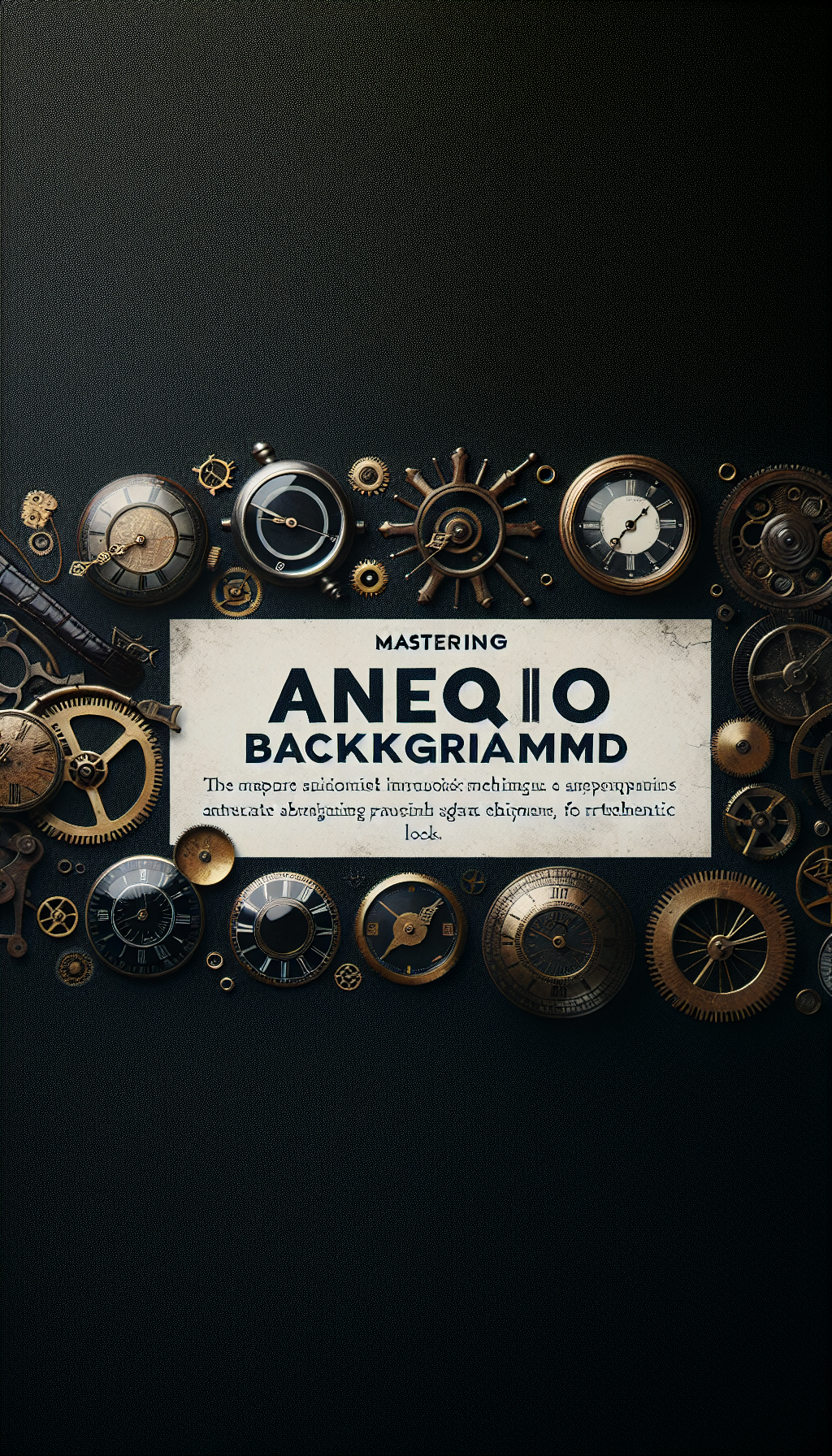Unveiling The Treasure: Discover The Hidden Value Of Your Vintage Mickey Mouse Watch
Disney character watches are more than nostalgic trinkets. For many collectors, a vintage Mickey Mouse watch blends popular culture, watchmaking history, and design evolution in a way few objects can. If you’ve inherited one or found a candidate at a flea market, understanding what you have—and what it might be worth—comes down to era, originality, condition, and completeness. This guide walks you through identification, authentication, value drivers, market benchmarks, and best practices for care and appraisal.
A Brief History And Why It Matters
Knowing who made your watch and when it was produced is the single biggest factor in value.
Ingersoll-Waterbury (1933–1940s): The first Mickey Mouse wristwatches debuted in 1933 at the Chicago World’s Fair. Early models used inexpensive pin-lever mechanical movements and featured Mickey’s gloved arms as the hour and minute hands with a rotating seconds disc. Cases were typically nickel- or chrome-plated base metal. Ingersoll also produced pocket watches and licensed production in the UK. The earliest licensing line often reads “Walt Disney Enterprises,” later transitioning to “Walt Disney Productions.”
US Time / Timex lineage (1940s–1960s): Ingersoll evolved into the US Time Company during and after WWII, eventually rebranding as Timex (1969). Character-watch production continued, with design refreshes and improved materials in some runs.
Bradley Time (early 1970s–mid-1980s): Bradley Time Division (of Elgin) took the Disney license, producing a wide variety of mechanical and early quartz models. Many collectors today cut their teeth on Bradley pieces from the 1970s.
Lorus / Seiko (mid-1980s onward): Quartz technology dominates this era. Lorus (a Seiko brand) delivered reliable, mass-produced watches with countless dial variants. These are widely collected but generally more affordable.
Modern collector and luxury crossovers: From the 1990s onward, brands from Fossil to high-end houses have interpreted Mickey. While some modern editions are valuable, they’re distinct from the vintage Ingersoll/Bradley universe.
Why the history matters: Period-correct features and maker marks authenticate your watch, frame collector interest, and strongly determine price. The earliest 1930s Ingersoll pieces, especially complete with original box and stand, tend to command the highest premiums of the “classic” Mickey watches.
How To Identify And Date Your Mickey Watch
Date and authenticity flow from a few predictable clues. Move methodically:
- Dial art and copyright line
- Pie-eyed Mickey (triangular “pie slice” pupils): Generally 1930s design. Be cautious—some later commemoratives re-used pie-eyed art.
- Copyright text:
- “Walt Disney Enterprises” appears on early pieces (roughly 1930s).
- “Walt Disney Productions” spans mid-20th century up to c. 1986.
- “The Walt Disney Company” (or simply “Disney”) is post-1986.
- Maker name: Look for “Ingersoll,” “US Time,” “Bradley,” or “Lorus.” Placement varies among dial, caseback, or movement.
- Hands and seconds disc
- Classic configuration: Mickey’s arms as hour and minute hands, usually white gloves with black outlines. Early Ingersoll wristwatches often include a rotating seconds disc at 6 o’clock featuring three small Mickey figures or related artwork.
- Variations: Some later models omit the disc, change the pose, or switch to conventional hands alongside Mickey imagery.
- Case and caseback
- Materials: Early models often plated base metal (nickel/chrome), later ones include gold-tone plating or stainless backs. UK-made variants may use locally sourced cases.
- Back markings: Snapback case with stamped maker marks and Disney copyright is typical vintage. Screwbacks appear in some later or non-typical variants.
- Country of manufacture: “U.S.A.,” “Great Britain,” “Japan,” or “Hong Kong” can help triangulate maker and period.
- Movement type
- Mechanical pin-lever (Roskopf-style): Common in Ingersoll and many Bradley watches. A cheaper, robust design with characteristic “clicky” feel when setting.
- Quartz: Dominant from the late 1970s–1980s onward (especially Bradley and Lorus). Battery-powered with a tick per second; often marked “Japan” on movement or dial in the Lorus era.
- Packaging and ephemera
- Early Ingersoll: Boxes with bright graphics and sometimes a display stand increase value significantly. Instruction leaflets and guarantee papers add credibility.
- Bradley and Lorus: Branded boxes, tags, and paperwork help confirm originality and raise price.
Tip: Date triangulation works best when several clues align. For example, an Ingersoll dial with “Walt Disney Enterprises” and a mechanical pin-lever movement is consistent with the 1930s; the same dial art with a quartz movement is a red flag.
What Drives Value: Condition, Originality, Rarity, Completeness
Four pillars dominate value for a vintage Mickey Mouse watch:
Condition
- Dial: Original printing with even, honest aging is prized. Flaking paint, moisture stains, or reprinted dials reduce value.
- Case: Plating wear, pitting, dents, or corrosion affect desirability. Light patina is acceptable; heavy loss or poorly executed polishing harms value.
- Crystal: Original acrylic with period-correct profile preferred, but clear replacements are acceptable. Deep scratches or clouding detract.
- Function: Running and keeping reasonable time lifts value, though even non-runners can be desirable if scarce and original.
Originality
- Hands, crown, seconds disc, and dial should be original to the watch. Mismatched components or modern substitutes lower value.
- Movement correctness: A mechanical movement in a 1930s Ingersoll makes sense; a quartz swap does not.
- Factory signatures: Maker marks on dial, movement, and caseback should align for the era.
Rarity
- Early production runs, unusual dial variants, regional (UK) editions, limited-store displays, and prototypes are scarcer and bring premiums.
- The “pie-eyed” 1930s look tends to be more sought after, but not all pie-eyed dials are valuable if they’re later reissues.
Completeness
- Original box, stand, tags, instruction sheets, and receipts can add 25–200% depending on scarcity and condition.
- Matching set (e.g., wristwatch plus period-correct strap or period pocket watch) often improves desirability.
Practical note on restoration: Light conservation (gentle crystal polish, case clean, movement service) is generally beneficial. Repainting dials, replacing original hands with replicas, or aggressive polishing typically reduces collector value.
Market Benchmarks And Current Trends
Character-watch markets are cyclical, but certain anchors remain steady. The ranges below are observed estimates for authentic examples; exceptional pieces exceed them, and condition/originality can swing values dramatically.
Early Ingersoll wristwatches (c. 1933–1934)
- Original dial/hands, running, with box/stand: typically $800–$2,500
- Without ephemera, honest wear: roughly $250–$800
- Early pocket watch versions: often $200–$700 depending on condition and completeness
Later 1930s–1940s Ingersoll/US Time variants
- Common configurations: $150–$600
- Scarcer UK-made or unusual dial/layouts: $400–$1,200+
Bradley Time (1970s–mid-1980s)
- Common mechanical or early quartz pieces: $50–$200
- Less common dials, anniversary editions, near-mint with box: $200–$600+
Lorus / Seiko (mid-1980s–1990s)
- Common quartz: $25–$125
- Limited editions or mint-old-stock with complete packaging: $100–$300+
Displays and ephemera
- Ingersoll period display stands, rare boxes, or advertising: high variance, roughly $300–$2,000+ based on rarity and condition
Current trends:
- Top-tier early Ingersolls in excellent, original condition remain stable to strong, with international demand.
- Mid-tier 1970s Bradley pieces have a steady entry-level collector base, especially for boxed examples with bright, clean dials.
- Quartz-era Lorus watches are abundant but see spikes for unusual graphics or untouched old stock.
- Provenance, clear photos, and honest condition descriptions are increasingly rewarded as buyers get savvier.
Caveats:
- Prices vary by venue. Specialist auctions can outperform general online marketplaces for rare early pieces.
- Fads—anniversaries, movie releases, or well-publicized sales—can temporarily inflate interest in certain variants.
Quick Appraisal Checklist
Use this concise checklist to triage a watch before deep research:
Identify maker and era
- Note the maker mark (Ingersoll/US Time/Bradley/Lorus).
- Read the copyright line (“Walt Disney Enterprises,” “Walt Disney Productions,” “The Walt Disney Company”).
- Confirm movement type (mechanical vs quartz) aligns with the era.
Verify dial, hands, and seconds disc
- Are Mickey’s arms correct length/style for the model?
- Is the seconds disc present and consistent with known variants?
Inspect case and back
- Check plating wear, corrosion, dents.
- Confirm country of origin and period-appropriate case style.
Assess originality and condition
- Look for signs of reprinted dial, replaced hands/crown, mismatched parts.
- Test winding, setting, and seconds disc rotation (if present).
Evaluate completeness
- Box, stand, tags, papers, and period strap add significant value.
Estimate range
- Place it into an era bucket and match to typical ranges above, adjusting for condition and completeness.
Document
- Take clear, straight-on photos of dial, caseback, lugs, and movement (if safely accessible). Keep any replaced parts.
FAQ
Q: How can I tell a 1930s Ingersoll from a later reproduction? A: Triangulate three points: the copyright line (“Walt Disney Enterprises” or early “Walt Disney” forms are 1930s), a mechanical pin-lever movement, and period-correct caseback stamps. A quartz movement, modern “The Walt Disney Company” text, or incongruent fonts are red flags. Early Ingersolls commonly have a rotating seconds disc and plated base-metal case with stamped marks.
Q: Should I service a non-running watch before selling? A: If it’s a desirable early Ingersoll and you can use a watchmaker experienced with vintage pin-lever movements, a sympathetic service can improve value and buyer confidence. Avoid cosmetic “restorations” like dial repainting or heavy polishing. For lower-tier quartz pieces, a fresh battery and function check are usually sufficient.
Q: Does a replacement strap hurt value? A: Not significantly for most pieces, as straps are consumables. However, retaining the original strap (even if worn) alongside a wearable replacement adds completeness and can boost value. For top-tier 1930s examples, original straps and buckles are a plus.
Q: Are non-running watches still collectible? A: Yes—especially if they are early, original, and cosmetically sound. Many collectors prefer an untouched dial and correct hands over a freshly serviced but over-restored example. Price accordingly, disclosing the fault.
Q: What’s the biggest value killer? A: Repainted or incorrect dials, mismatched modern parts (e.g., quartz movement in a supposed 1930s case), and heavy case polishing that erases sharp edges or stamps. Excess moisture damage to dial and movement is another major detractor.
Final pointers: Photograph your watch honestly, note all markings, and compare to known period examples by maker and decade. Early, original Ingersoll pieces with clean dials and complete packaging can be standout collectibles. Bradley and Lorus watches offer accessible entry points, with premiums for mint, boxed examples and unusual dial art. Prioritize careful preservation over cosmetic “improvements,” and let era, originality, condition, and completeness guide your appraisal.




